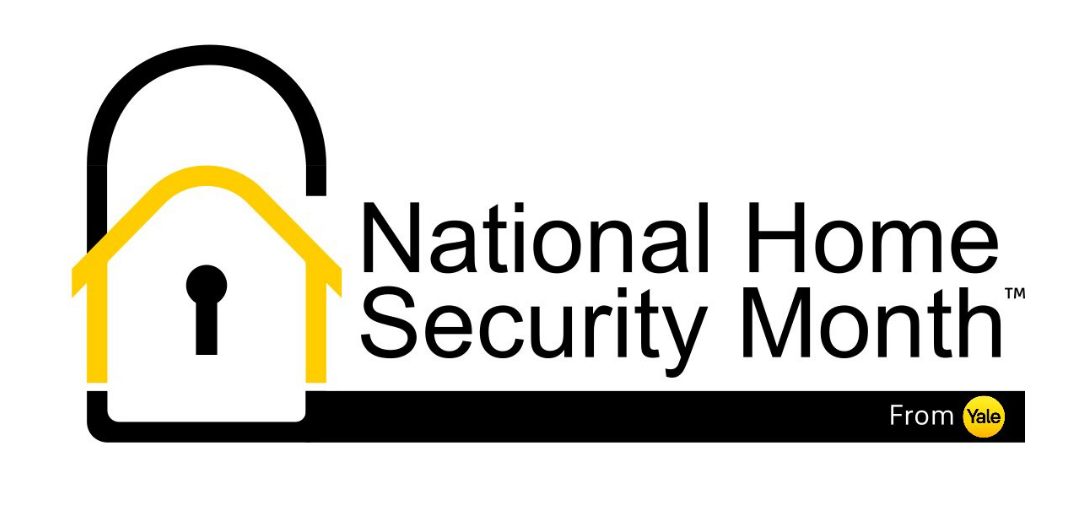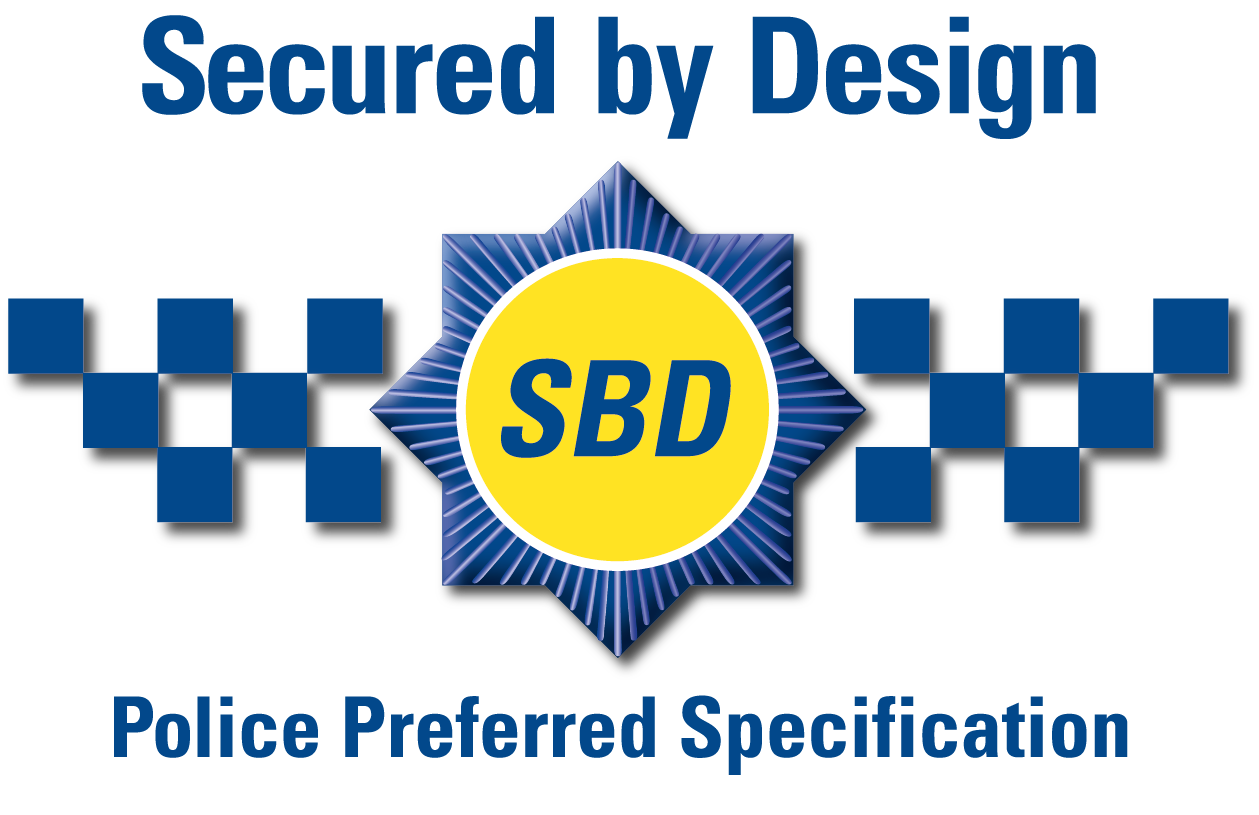Keeping your home safe and secure
As part of National Home Security Month 2023, Secured by Design’s Kenny McHugh, looks at some simple steps that everyone can take to keep their home safe.

Here are a few simple steps that you can take to ensure that your home stays safe and you reduce the chances of falling victim to an opportunistic burglar.
Outside the house
The first thing I recommend is that you consider your security through the eyes of an opportunistic criminal, who is likely to walk on by if the risks of being seen and heard are too great. A visible deterrent gives criminals the first indication that you have an awareness around security. So what is a visible deterrent?
This is as simple as having well maintained walls, fences and hedges at the front. They should be a maximum of 1 metre in height, to maximise surveillance and minimise hiding places to ensure criminals are on view from both the home and street.
Alternatively, railings or picket fencing can be used. Hedges, trees and bushes should be regularly cut back. As a general recommendation, shrubs should be selected to have a mature growth height no higher than 1 metre, and trees should have no foliage or lower branches below 2 metres.
At the rear and sides of your home, taller boundaries are recommended, with fencing at a minimum height of 1.8 metres and topped with 0.3 metres of trellis to make climbing over more difficult.
Side gates should be a minimum of 1.8 metres high, robust and capable of being locked. Use prickly plants, such as pyracantha or climbing roses, to protect fencing, easily accessible windows and drainpipes.
Lighting and paths
Remember with the nights starting to draw in it is important that you have some lighting around your property. At the front of your property look to have a light that automatically comes on at dusk and switches off at dawn. Energy efficient LED bulbs are the most energy efficient and they give off a good white light. At the side and rear of your property you can install a switched light (one you switch off and on as you need it) or one that is automatically activated by heat or a motion sensor, commonly referred to as ‘PIR lights’. You can find lots of examples on-line or in any local DIY store. Just a wee note of caution, when doing any alterations or additions, think about light pollution and is this going to impact on my neighbours?
Gravel driveways or pathways can be attractive and help you hear the noise of approaching footsteps. Energy efficient dusk to dawn external lighting at the front and rear of your property will provide added security, as thieves do not like to be seen.
Physical security - sheds, outbuildings and garages
It is important for buildings of all types to be physically secure to deter criminal activity and reduce crime, and this includes sheds and outbuildings. People often pay less attention to garages, sheds and other outbuildings, however these are vulnerable as they are generally not very secure and also contain expensive equipment and tools with which a burglar can use to assist them to gain entry into a home.
You should therefore ensure that all external outbuilding doors are of solid construction with suitable locks or a close shackle padlock and lock bar fitted to it. Consider fitting non-returnable screws or coach bolts to the hinges. There are external containers available which are designed for the secure storage of mopeds, scooters, motorcycles or bicycles and other property which have attained Police Preferred Specification.
Locks should be fitted to all outbuilding windows and ideally a shed should have no windows. Consider a battery-operated shed alarm. They look low key but they respond to movement or door contact with an extremely loud siren. Please keep it out of the reach of young children.
Garage doors can be vulnerable and you can make them more secure by installing additional security, such as padlocks, to provide multiple locking points or using floor-mounted locking T-bars.
If you have a door connecting the garage to the house make sure this has the same level of security as your front door, with locks that meet BS 3621, or fitting a door that has achieved Police Preferred Specification. Whilst it’s great to get the right lock, if the door is worn out or badly maintained then you should be replacing the entire doorset.
Do not forget that ladders and tools left outside can be used to assist burglars to break into your home. Ensure they are well secured, or alternatively stored in a garage or shed.
Garden rooms /offices have become increasingly popular due to changes to working practices and commuting patterns. Whilst working from home in a dedicated garden office has many advantages, these offices have become a target for burglars. Whilst most are well constructed, with multi-layers of timber and insulation, the doors and windows are always going to be the main target to gain entry. Opportunist theft is the biggest threat to your garden office, so it’s really important the doors and windows are tested and importantly certificated to withstand an attack. All offices have valuable equipment – anything small and portable and that can be easily concealed are favourites with burglars. Laptops and mobile phone are easily removed and shouldn’t be left in the garden office overnight and they may also hold personal and commercially sensitive information.
Physical security - house
We advise that doorsets – door, frame, locks, fittings and glazing – which allow direct access to your home achieve our high security standard, Police Preferred Specification.
Easily accessible windows, including easily accessible roof lights and roof windows, should also meet Police Preferred Specification standards. Both door and window frames must be securely fixed to the building fabric in accordance with the manufacturer’s instructions and specifications.
Even the most secure doors are vulnerable if we don’t lock them - even when we are at home, lock your doors & windows. Always keep your keys to hand should you need to exit quickly for whatever reason.
Security systems
If you have decided your property would benefit from an alarm system, you should ensure that you use a reputable alarm company. To obtain information on reputable companies who supply and install security systems in your area, I recommend you contact the following Independent Inspectorate Bodies who will be able to supply you with these details - the National Security Inspectorate (NSI) or the SSAIB (Security Systems & Alarm Inspection Board). Both Inspectorates have search functions on their websites to help you find an appropriate installer and having an alarm system certified by one of the accredited independent Inspectorate Bodies will ensure you have a reliable and well maintained system that meets relevant British and European standards and which could result in lower insurance premiums.
When having an alarm fitted, check that the installer is a Secured by Design accredited installer – Secured by Design alarm installers will ensure a high quality alarm system and give you enhanced levels of reassurance that the alarm installation company meets the exacting standards of the Police Service.
Safes & property marking
Good-quality doors, windows and locks are excellent deterrents, but there’s even more you can do to stop burglars in their tracks and protect your valuables. Whenever they are not being used, store valuables such as passports, credit cards, identification documents and jewellery in a safe that complies with BS EN1143 standards to the appropriate grade. Your safe needs to be placed somewhere discreet where it can’t be easily discovered – ideally in an alarmed part of the house – and bolted to a wall or floor.
Property marking makes it easier for the police to trace and recover your possessions. Register with a Secured by Design accredited property marking system to assign your valuables their own unique code, allowing them to be traced back to you – this includes for valuable tools and bikes that are stored in outbuildings and garages.
Register your valuables free of charge using a police recognised database. Keep documents, such as receipts, so you can prove ownership. Take photos of all valuable items, including antiques and family heirlooms, which are particularly attractive to criminals.
Keep your car keys safe
Vehicles fitted with a smart or passive key (a contactless key) are susceptible to a type of theft called “Relay Theft”.
There are a wide range of electronic devices, key cloning devices and other tools that can be easily obtained by opportunist thieves and criminal gangs to target your vehicle.
The criminals normally work in pairs, targeting vulnerable and desirable makes of vehicles by using cloning devices that have the ability to grab the signal from the smart key so that it appears to the car or van that the key is present. The whole process can take as little as 60 seconds and for safety reasons, the engine won’t cut out when the key is out of range.
Your vehicle is most vulnerable overnight, particularly if parked on your driveway or directly outside your home where most of these thefts occur.
Don’t leave your keys in the hallway near the front door as fishing for vehicle keys through the letterbox is a prominent method of stealing them. Grabbing the signal will also be easier for the thieves if the keys are near the front door.
When not in use store your keys in a security pouch. Security pouches are sometimes termed Faraday bags or RFID signal Fob Blocker/shields, these pouches will prevent the signal from your vehicle from being captured using electronic devices.
The Police Preferred Specification
Now, throughout this article I have made reference to Police Preferred Specification. Here at Secured by Design we work with manufacturers, the construction industry and standards authorities to ensure that security standards are current and updated to keep pace with emerging crime trends. Our Police Preferred Specification product based accreditation scheme has been operating for nearly 25 years and provides a recognised standard for all security products that are sufficiently robust to resist physical attack by casual and opportunistic burglars – it is the only way security products can attain police recognition.

There are currently many hundreds of companies producing thousands of attack resistant crime prevention products which have achieved Police Preferred Specification. Academic research has shown repeatedly over the last 25 years that these accredited, quality products have reduced burglary where they have been installed. You should therefore look for the Secured by Design logo on products or ask your supplier if they are Secured by Design. The Secured by Design website www.securedbydesign.com lists all products that have achieved the rigorous Police Preferred Specification standard.
The Secured by Design website also has a page which explains the different security standards for all manner of products https://www.securedbydesign.com/guidance/standards-explained
Secured by Design - Crime Prevention and Security Advice Hub
The Secured by Design Crime Prevention & Security Advice hub has practical crime prevention advice to help people stay safe, alongside details of products that have been tested and certified to meet the exacting standards you would expect from the police. Each webpage also has situation specific downloadable prevention advice PDFs.